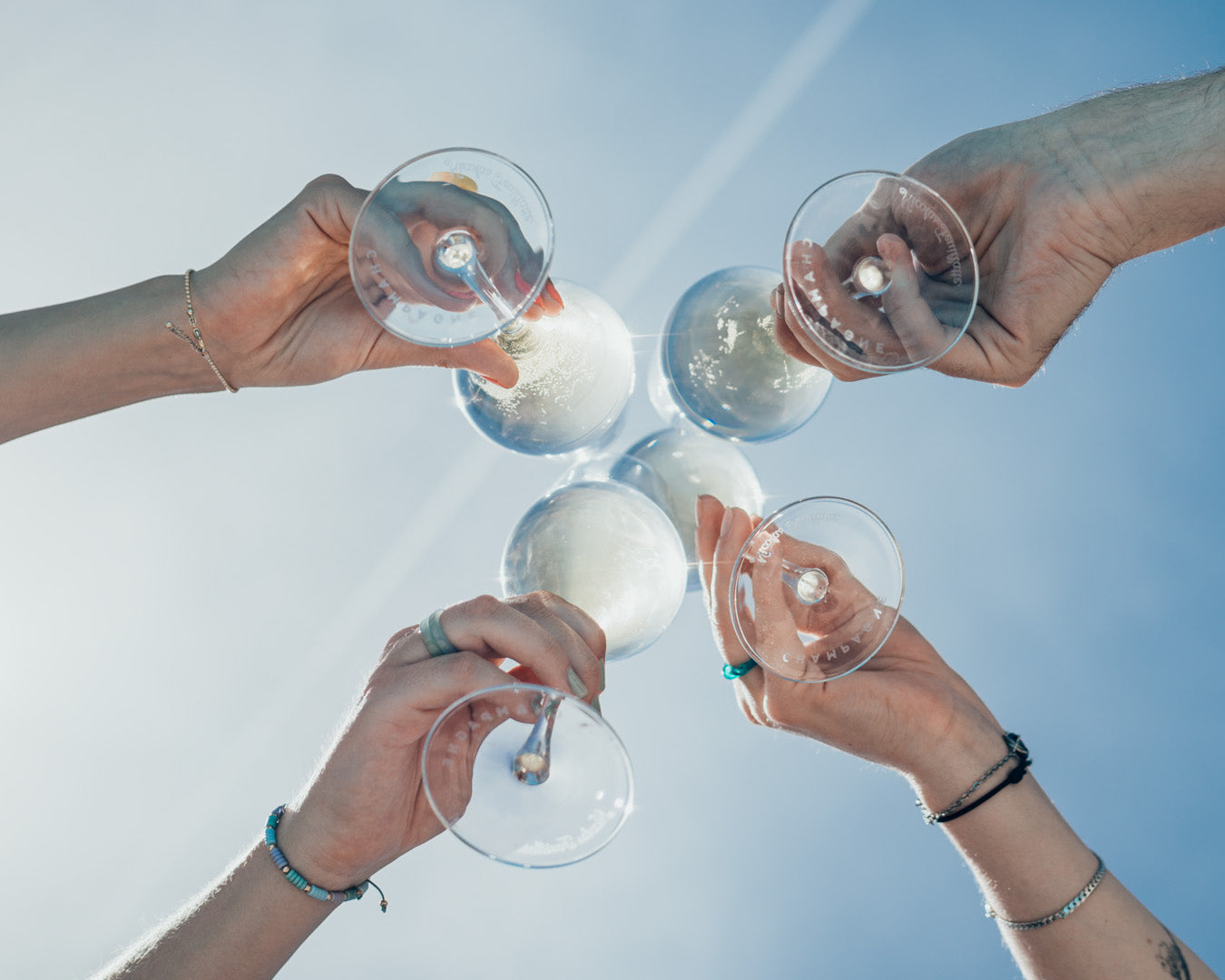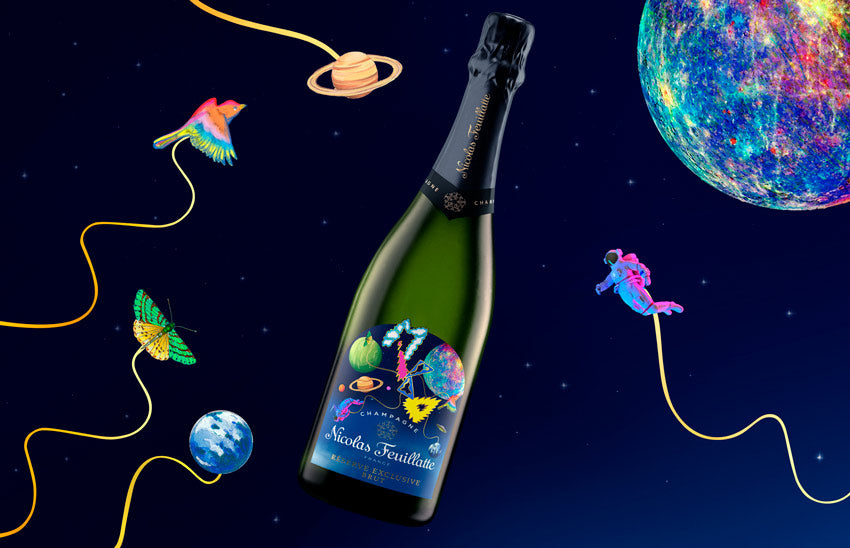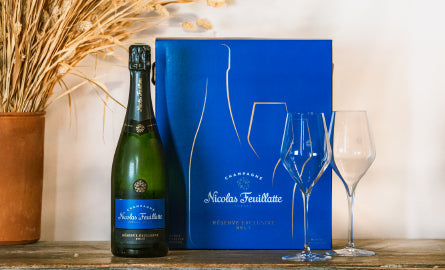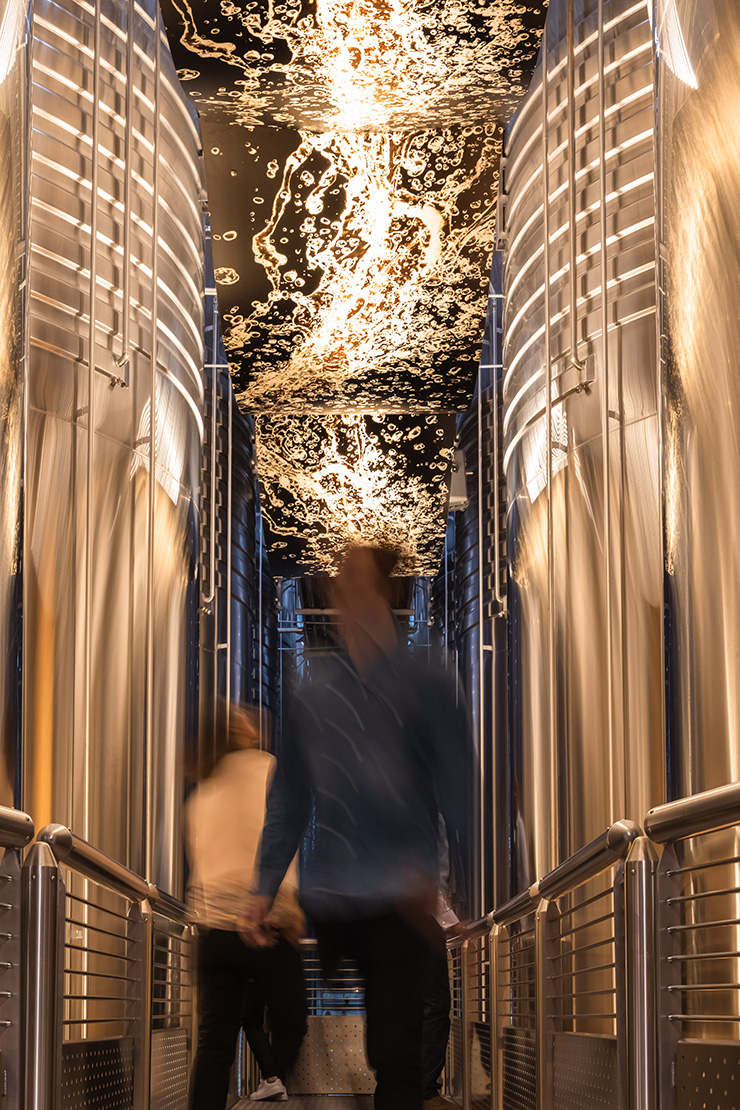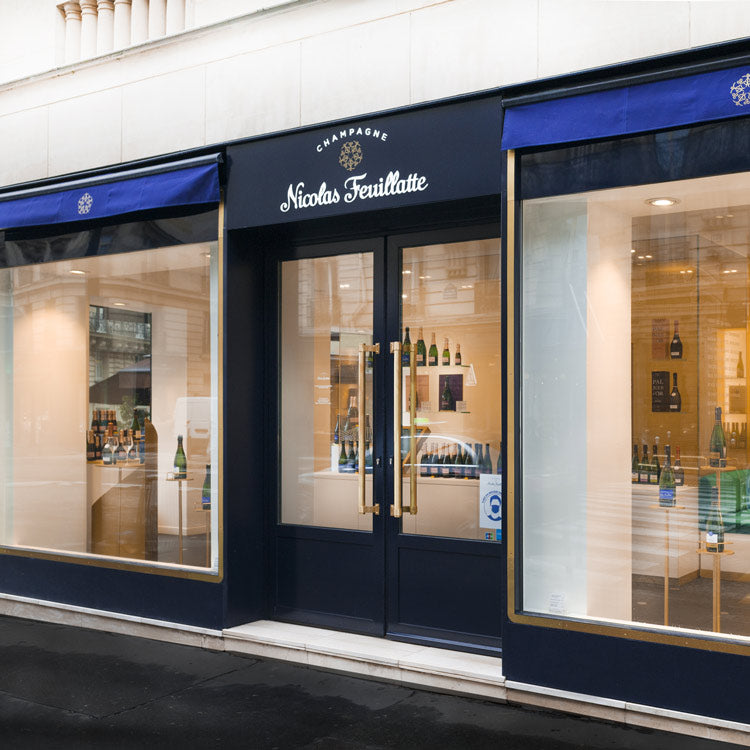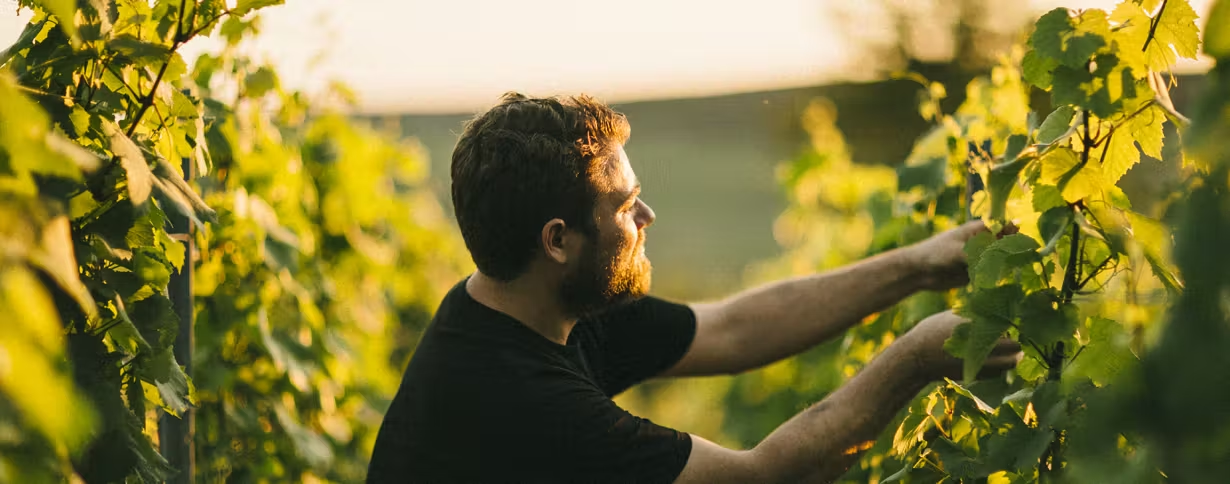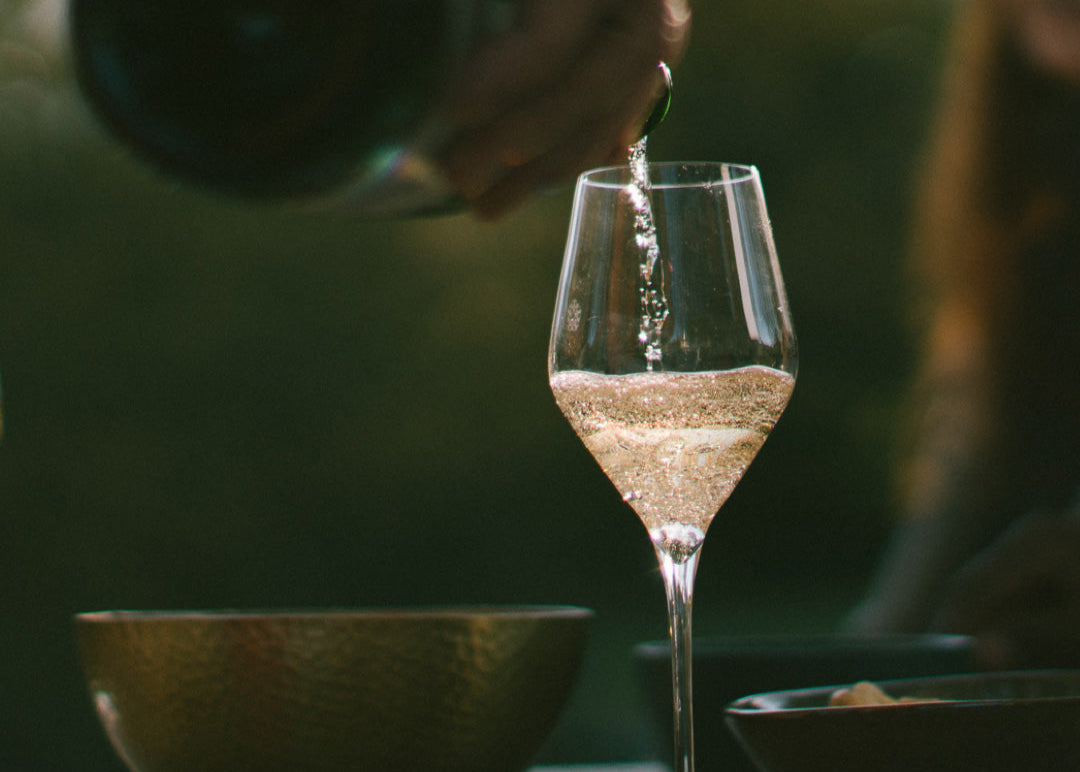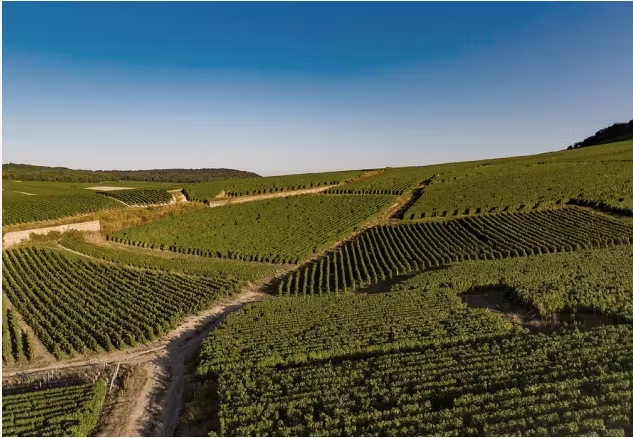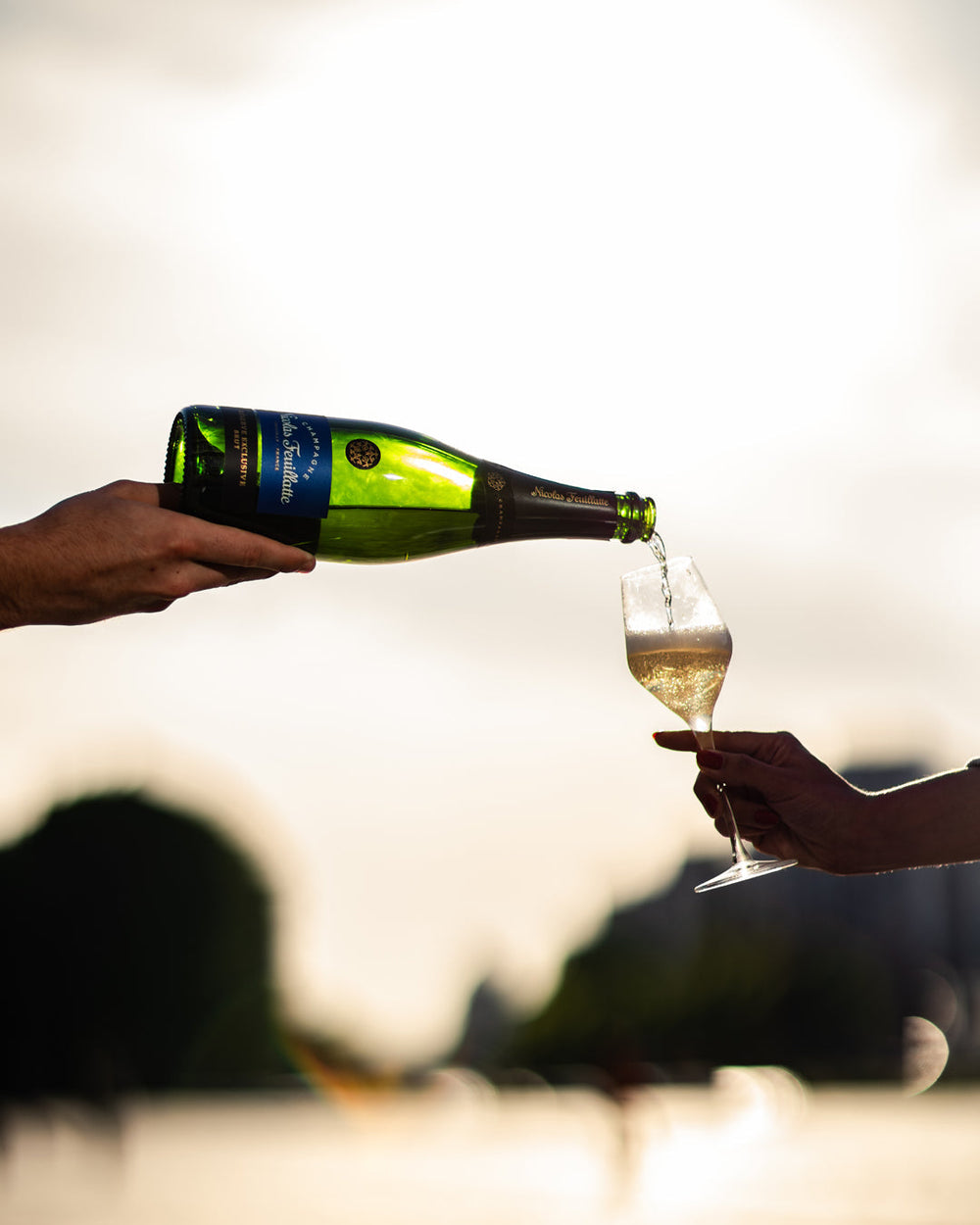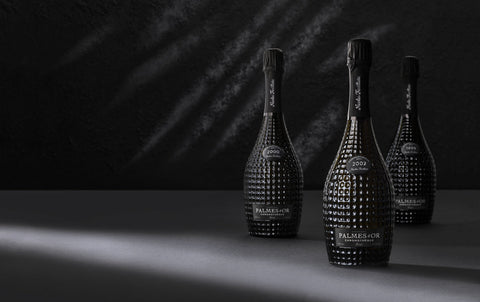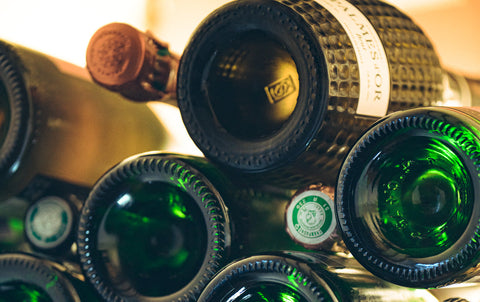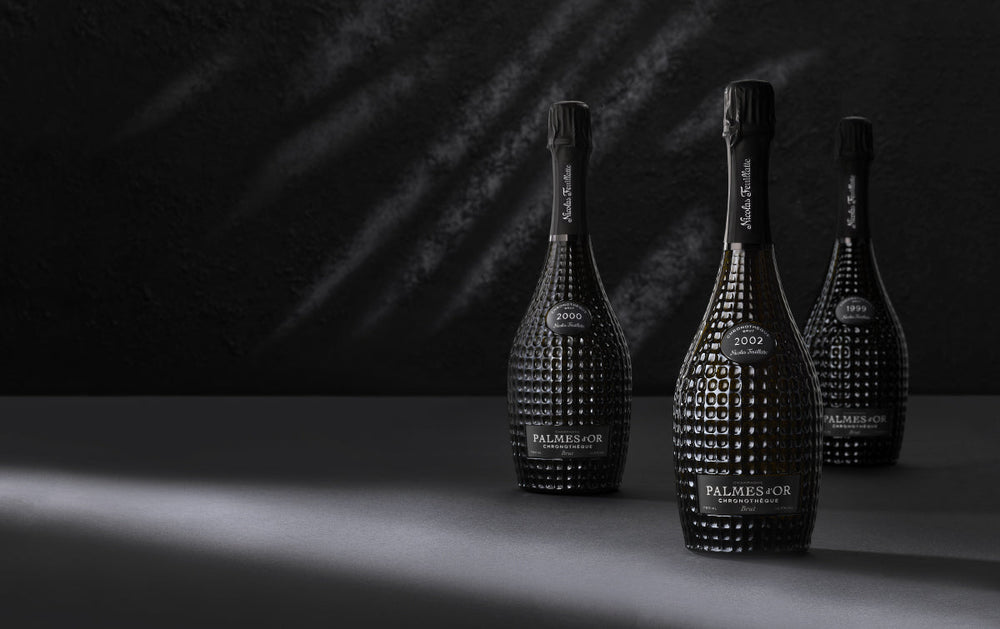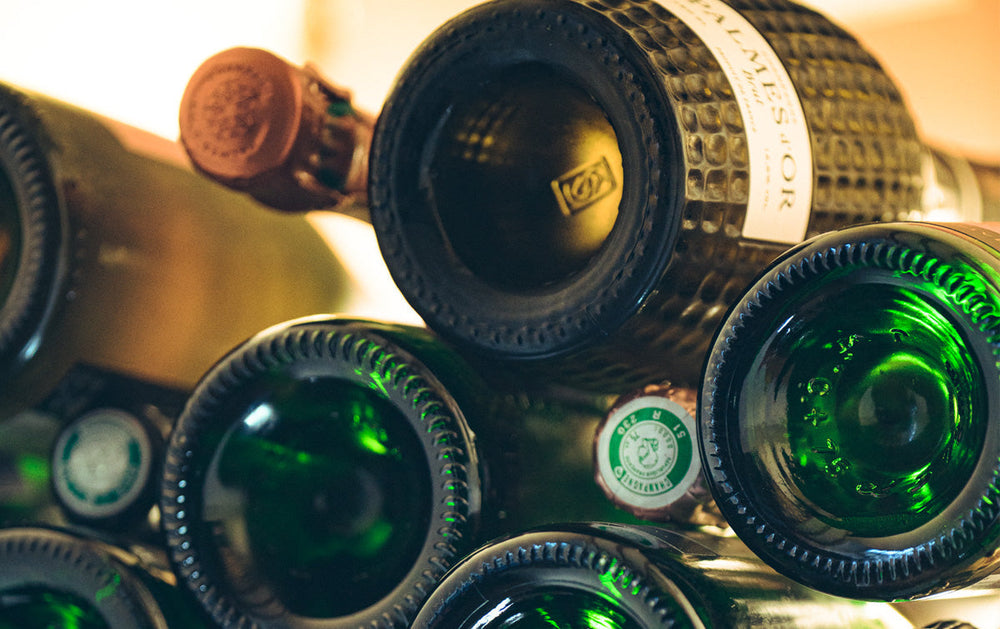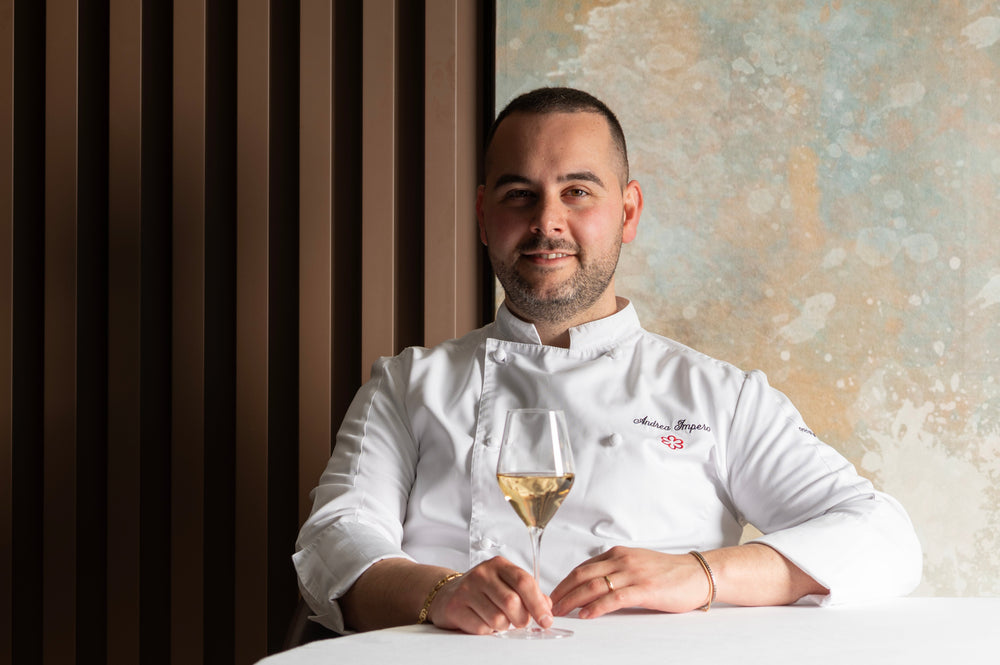We have selected for you the top 5 misconceptions about champagne and offer you some insights into them in this article.
We have selected for you the top 5 misconceptions about champagne and offer you some insights into them in this article.
Misconception #1: Champagne shall be served in flutes.
It's not ideal. Not only is it not very modern, but the glasses also prevent the champagne's bubbles from developing and its aromas from expressing themselves.
To enjoy champagne fully, it is recommended that you use a tulip-shaped glass that is tall enough to allow the bubbles room to develop and the aromas to express themselves.
Learn more about the impact of glass shape on tasting

Misconception #2: You can put champagne in the freezer to cool it faster.
We've probably all done it, and it may seem trivial, but putting a bottle in the freezer is not ideal for proper service.
In fact, freezing cold can limit aromas and bubbles.
If you have time, put the bottle in the least cold part of the fridge for 4 hours.
If you need it fast, put the bottle in a champagne bucket (or a basin) filled with cold water and ice cubes for about 30 minutes.
Misconception #3: Champagne is best paired with desserts
You can drink champagne with dessert, provided you choose the right champagne!
We still prefer to taste champagne as an aperitif, or during a meal, and vary the food and wine pairings according to the type of champagne selected.
There are many types of champagne, and just as many pairing possibilities.
If you would like to drink champagne with your dessert, we recommend choosing a demi-sec champagne, which has a higher sugar content, or a rosé champagne, which has a more fruity flavour. For example, our Réserve Exclusive Rosé goes very well with desserts made from red fruits (with a brut or a blanc de blancs, it won't be the same story!).
For pastries, crêpes or brioche, choose Réserve Exclusive Demi-Sec — the perfect accompaniment to desserts! It's also the ideal champagne with which to toast the bride and groom while cutting the wedding cake.
Please note that chocolate does not pair well with champagne. That's quite a myth-busting fact!
Misconception #4: When openning a bottle, you should pop the cork
We're getting to the heart of the matter — there's a whole protocol to follow! But one thing is certain: you should definitely not pop the cork like they do in the movies or at F1 circuits. Not only would you lose some of the wine, but the bubbles would dissipate too, which would have a negative impact on the effervescence. And that would be a real shame for a wine that's been made over several years.
In the rules of the art, you must start by removing the wire cage (the metal rod which protects the cork).
Take the cork in your hand, and with the other hand, hold the bottom of the bottle, then gently turn the bottle (yes, it's not the cork that turns). Make sure you hold the cork firmly to avoid any mishaps. Obviously, avoid pointing the bottle at your guests...
Misconception #5: Champagne is expensive
A question that many people ask themselves... Why is champagne more expensive than other sparkling wines?
There are many reasons why a bottle of champagne is so expensive: the specificity of the terroir, the specifications of the AOC Champagne, the price of the grapes, the production and development methods, etc.
The characteristics of the Champagne terroir
The climate
The Champagne terroir is exceptional thanks to its unique geography and specific climate. It is the most northerly vineyard in continental Europe. The Champagne climate is therefore cold and receives little sunlight, making it difficult to grow vines.
Champagne is influenced by two climates:
The majority is oceanic, bringing a lot of rain and little temperature variation from one season to another.
The continental climate can be responsible for destructive frosts in winter and good sunshine in summer, which is beneficial to the vines.
The basement
The subsoil is mostly composed of limestone. The chalk promotes soil drainage, transforming it into veritable water reservoirs, and ensures that the vines do not lack water even in the event of severe drought.
The relief
Champagne region is steep and hilly. The hillside location provides good sunlight for the vines and facilitates the drainage of excess water. Sloping terroirs benefit from better exposure to solar energy than those on plains.
These three aspects of Champagne (climate, subsoil, and terrain) create its unique character. But each plot has its own specificities, offering winemakers exceptional combinations.

The Champagne Hillsides have been listed as a UNESCO World Heritage Site since 2015, as have the Champagne Houses and Cellars!
The AOC Champagne
The Champagne terroir is so unique that it has allowed for the production of an atypical sparkling wine. Champagne is a protected area, strictly demarcated, with production regulations. It is a prestigious Appellation d'Origine Contrôlée, known to all, which must meet very strict production and development rules.
The main rules of the AOC Champagne are:
-
A strictly demarcated area.
-
7 authorized grape varieties: chardonnay, pinot noir, meunier, pinot blanc, pinot gris, arbane, petit meslier
-
Specific methods for pruning vines (Royat, Chablis, Guyot, Marne Valley).
-
Limitation of grape yield per hectare (in 2024, the yield was set at 10,000 kg/hectare)
-
Pressing yield.
-
Minimum alcohol content at harvest time.
-
Second fermentation in bottles and maturation on lees for a minimum of 15 months for non-vintage products, 3 years for vintage products.
Did you know?
Unlike other wines, it takes on average 2 to 3 years to produce a bottle of champagne (up to 10 years or more for prestige champagnes).

